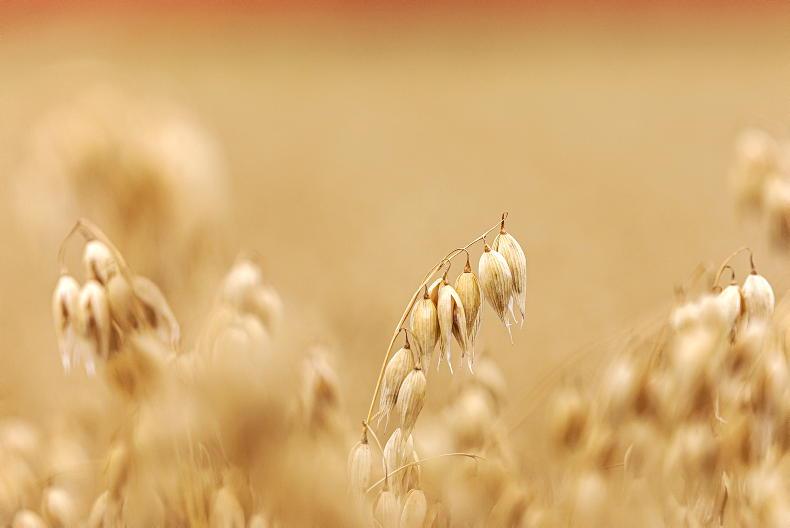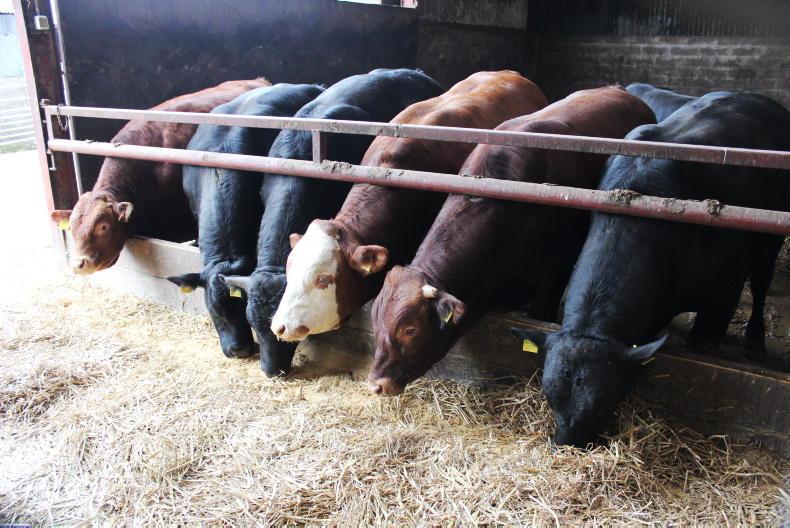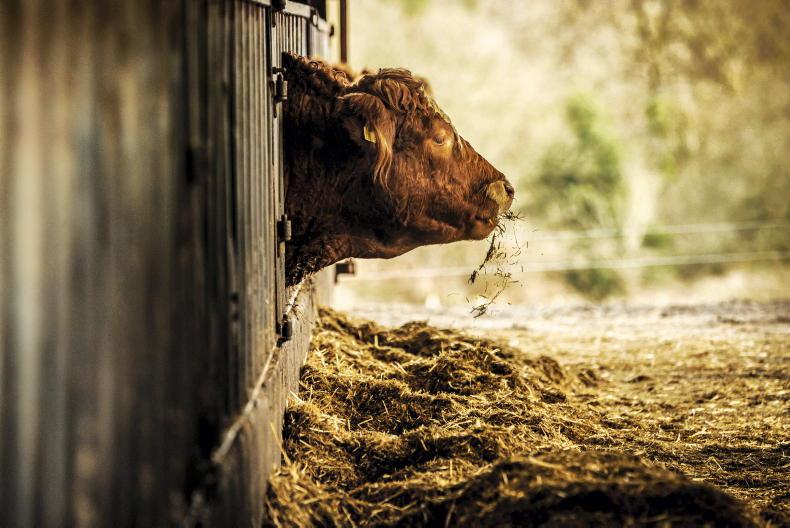In terms of cattle systems and the risk associated with them, there isn’t anything that comes close to the level of risk that winter finishers are being asked to take on this winter. For the last number of years, winter finishers haven’t been able to attract a premium for the most expensive beef produced during the year. It’s a perfect storm this year for winter finishers. Meal prices have seen a 60% increase on 2021 levels.
Table 1 outlines the current costings and it’s taking €320 in meal costs to finish a bullock on 754kg of meal this winter. A €20/t increase in meal costs will add 4c/kg to the price required to break even.
Winter finishers will need €6/kg to cover all costs this winter. Silage costs have increased in line with increased fertiliser costs and rising contractor charges.
One point to note is that the budget below is calculated with 72DMD silage and good management to achieve 1.1kg of gain/day. Poorer silage and management would see costs escalate well beyond €6/kg. On the market side, we are also seeing a unique set of circumstances which are not beneficial to the beef trade.
A wavering sterling isn’t good for Irish exporters and the cost of living squeeze will also likely alter consumer buying habits, with beef purchases likely to be one of the meats that will be affected as consumers become more price conscious with their purchases.
At the moment, beef price is actually moving in the wrong direction, with an average €4.65/kg base price being quoted for bullocks this week. The current price is almost exactly €1/kg off where it needs to be.
That means on a 400kg carcase, winter finishers look set to lose €400/head. A relatively small finishing enterprise of 100 cattle will invest over €230,000 to purchase and feed the stock. To ask farmers to do this with absolutely no foresight and beef price in four months time from factories, is completely unacceptable.
We know that factories sign contracts with their customers for periods as far out as six months, yet they are unwilling to pass this level of certainty on to their suppliers.
Factories unwillingness to sit down and engage with winter finishers will see many walk away from the system. They seem happy to abandon the small traditional family farm and move more to larger feedlot systems for their winter supply requirements.
In the longer-term, this shift will lead to an increase in seasonality, which isn’t good for the industry and more importantly won’t be good for farmers. A seasonal production system would see more animals being shifted to an autumn finish off grass, which would lead to an increased supply during August, September and October.
An increased supply would give processors the chance to collapse prices as supply exceeds demand. With a higher proportion of the national kill now coming from the dairy herd, this could be a real possibility and will present huge challenges for the industry to navigate. Unfortunately, farmers are their own worst enemy when it comes to winter finishing.
Factories will continue to buy cattle as cheap as they can and the fact that farmers continue to winter finish means nothing will change. Every year, budgets are completed to ascertain the beef price required to deliver a small margin on top of the huge investment that takes place.
The reality is, year after year farmers use their single farm payment and other supports to subsidise the winter finishing business with only one winner in the end – the processor.










SHARING OPTIONS